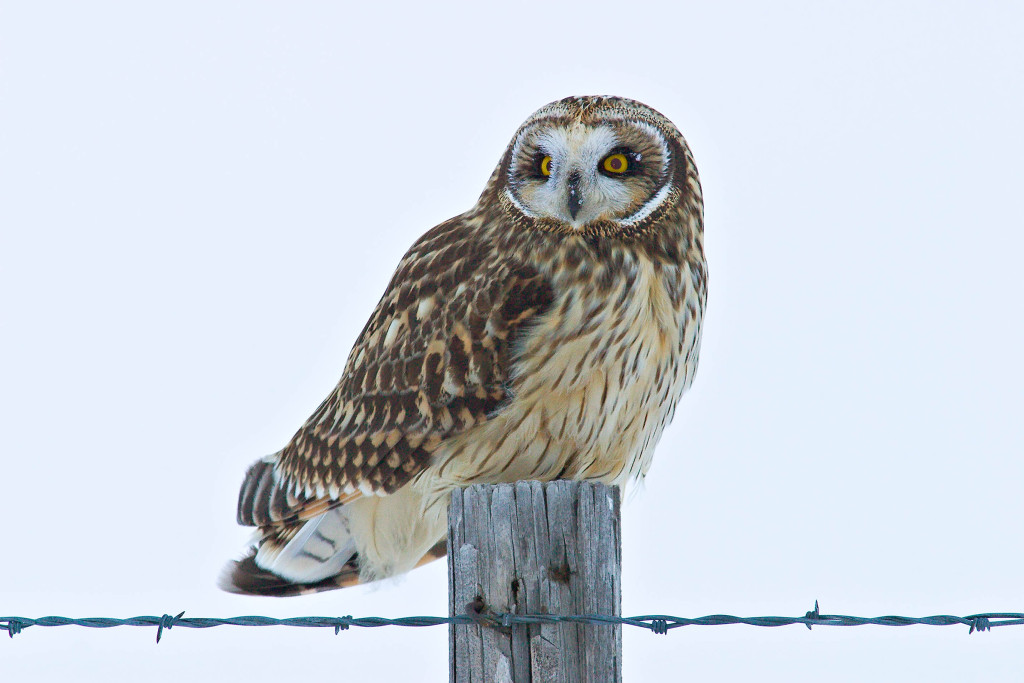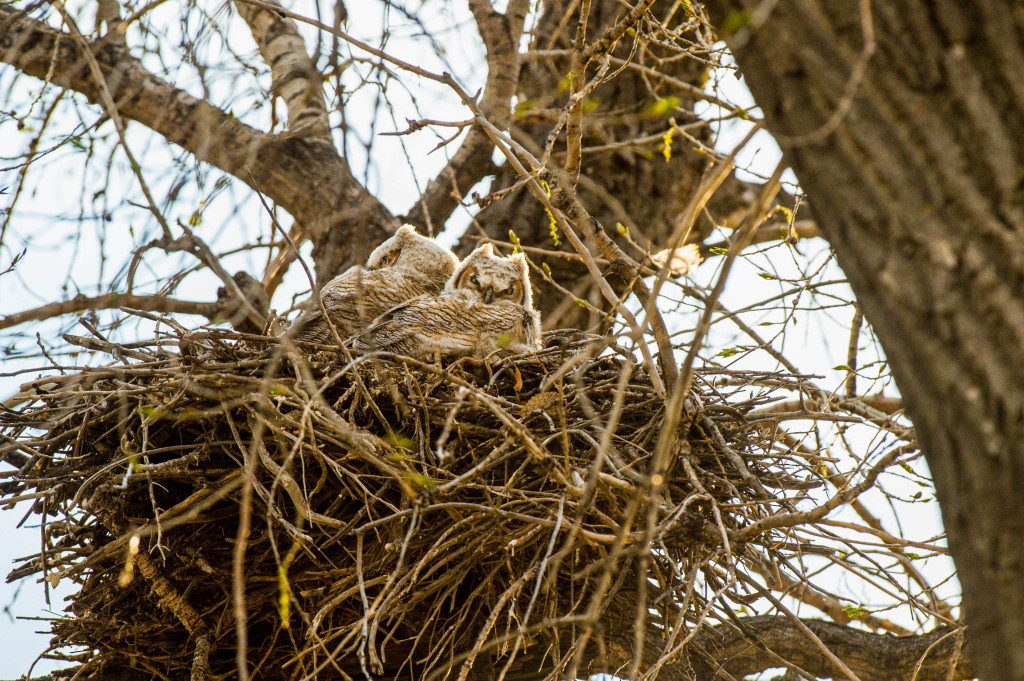
By Olivia DaRugna, Watchable Wildlife Biologist
Don’t let cold temperatures keep you cooped up inside this winter. January is a great time to look and listen for owls, an activity known as “owling.” Regardless of where you live in Nebraska or your birding skill level, anyone can enjoy watching and listening for owls.
Owls are one of the earliest nesting birds in Nebraska, and because of this, winter is a great time to listen for them. Great horned owls (Bubo virginianus) and barred owls (Strix varia) call to mates and hoot to defend nesting territories throughout the winter. Great horned owls may begin laying eggs as early as late January with young emerging in mid-March. Barred owls nest as early as the first week of February, and eggs hatch in early April.
Equipped with large eyes for nighttime hunting, great hearing and silent flight, owls are extremely well adapted to the nocturnal lifestyle. Although elusive, there are steps you can take to make your owling experience more successful.
Go Owling
Owling is a fun activity for the whole family, offering a good excuse to get out of the house and enjoy fresh air and nature. Although walks around sunrise and dusk can be the most productive times to view owls, there are opportunities to observe these nocturnal birds any time of day.
With no leaves on the trees in winter, owls are more visible as they perch on branches. Take a closer look at those dark clumps in the trees. What might appear to be a squirrel nest at a quick glance could actually be an owl perched in the tree. Use binoculars to search for an owl’s stick nest, and you might see an owl staring back at you. Come late March, you might find multiple owls quizzically staring back at you. Nestlings have a fuzzy, frazzled look as their soft, pale, downy feathers cover their bodies before their flight feathers grow in.
Hearing lots of blue jays and crows calling? Grab a pair of binoculars and scan the trees where the calls are coming from. Paying attention to other birds’ behaviors can be one of the easiest ways to find owls, especially during the day. The presence of a raptor can be viewed as threatening, and birds like blue jays and crows will often “mob” an owl to drive it off. Prey birds will flock together, call and sometimes hit the owl with their beaks and feet.
Even if you can’t see an owl, you can often hear them. Listen for the various owl calls from hoots to squawks to barks. The calls they make are just as entertaining as viewing the owl itself. Before looking for owls, it’s helpful to learn a few owl calls first. Start with the most common species, such as great horned and barred owls.
The great horned owl is recognizable by its low “hoo hoodoo hooo hoo” song. The barred owl is unmistakable by its “Who cooks for you… Who cooks for you all” hoot; when a pair gets going, they can make weird calls that seem to blend together: hoots, caws and gurgling sounds — noises that might resemble what you’d hear at the zoo.

Where to Go Owling
Owls can be observed anywhere in Nebraska. Here are a few notable locations:
- Barred owls can be observed along wooded river corridors in eastern Nebraska. Visit parks with mature woods around riparian habitats, such as Ponca and Indian Cave state parks, Schramm Park State Recreation Area and Rock Creek Station State Historical Park. Take a stroll or drive through these parks around dawn or dusk for decent opportunities to observe this owl.
- Great horned owls often are observed in neighborhoods, city parks and state parks. Go owling at a nearby park or state recreation area, such as Branched Oak and Enders state recreation areas.
- Short-eared owls (Asio flammeus) are an open prairie dwelling species that are most often observed in winter and early spring, when there is little snow cover. For best chances of viewing this stealthy, nomadic species, visit less developed areas with grassland habitat such as Kiowa, North Lake Basin or Jack Sinn Memorial wildlife management areas.
- During the day, look for snowy owls (Bubo scandiacus) in open grassland and field habitats. Typically, there are a few to over a dozen snowy owls that wander into Nebraska each winter. Double check those large white clumps in farm fields and the mowed grass around airport runways — one might turn out to be a snowy owl.
To discover more birding locations, visit www.NEBirdingGuide.org.
Be a Good Owl-bserver
These nocturnal animals can be easily disturbed as they’re getting some zzz’s during the day or hunting. Here are a few tips on etiquette to make owling enjoyable for both you and the birds.
- Keep your distance. Witnessing an owl’s natural behavior, like when it’s hunting for prey, is a rewarding experience, but do your best not to disturb its activity. If an owl is fidgeting, repeatedly staring at you or changing position, you’re too close and should take some steps back. Binoculars and a viewing scope are useful for viewing birds at a distance. Even your car can make a suitable (and warm) viewing blind to watch wildlife.
- Do not feed owls. This can be harmful to birds and people.
- Do not use electronic playback, especially if you suspect that owls might be nesting or on territory. As winter marches on, vocal activity will naturally pick up, and you will have plenty of owl sounds to hear if they are around.
